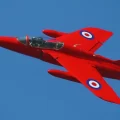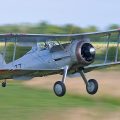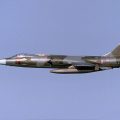
Martin Marietta X-24 | |
|---|---|
| Land | Usa |
| Rolle | Koncept demonstrant fly |
| Første flyvning | 24. oktober 2000 |
| Bygget | 2 |
Den Martin Marietta X-24 was an American experimental aircraft developed from a joint United States Air Force-NASA program named PILOT (1963–1975). It was designed and built to test lifting body concepts, experimenting with the concept of unpowered reentry and landing, later used by the Space Shuttle. Originally built as the X-24A, the aircraft was later rebuilt as the X-24B. The X-24 was drop launched from a modified B-52 Stratofortress at high altitudes before igniting its rocket engine; after expending its rocket fuel, the pilot would glide the X-24 to an unpowered landing.
| Martin X-24B Løftekrop gå rundt | |
|---|---|
| Fotografer | John Heck, Randy Ray |
| Lokalisering | Nationalmuseet for USAF |
| Billeder | 36 |
Relaterede sæt:
| Martin X-24A Løftekrop går rundt | |
|---|---|
| Fotografer | John Heck, Randy Ray |
| Lokalisering | Nationalmuseet for USAF |
| Billeder | 34 |
Find kits på eBay:
Se også:
The Martin Marietta X-24 was a remarkable experimental aircraft that tested the feasibility of lifting body designs for reentry and landing. Lifting bodies are vehicles that generate lift from their shape rather than from wings. The X-24 was part of a joint program between the United States Air Force and NASA, named PILOT, that ran from 1963 to 1975. The program aimed to explore the possibility of returning a spacecraft from orbit and landing it like an airplane at a predetermined site.
The X-24 had two versions: the X-24A and the X-24B. The X-24A was a fat, short teardrop shape with vertical fins for control. It made its first glide flight in 1969 and its first powered flight in 1970. It was launched from a modified B-52 bomber at high altitudes and either glided down or used its rocket engine to climb higher before gliding down. The X-24A flew 28 times at speeds up to Mach 1.6 and altitudes up to 71,400 feet.
The X-24B was a modified version of the X-24A with a more streamlined shape resembling a flying flatiron. It had a rounded top, a flat bottom, and a double delta planform that ended in a pointed nose. It also had a larger vertical fin and smaller horizontal stabilizers. The X-24B made its first flight in 1973 and flew 36 times at speeds up to Mach 1.76 and altitudes up to 74,130 feet. It demonstrated the ability to perform an unpowered landing after reaching speeds of Mach 5.
The X-24 was an important precursor to the Space Shuttle, as it proved that a wingless vehicle could reenter the atmosphere and land safely and accurately. The data and experience gained from the X-24 flights were used to design and test the Space Shuttle orbiter. The X-24 also paved the way for future reusable spacecraft concepts.
Set antal gange : 914











